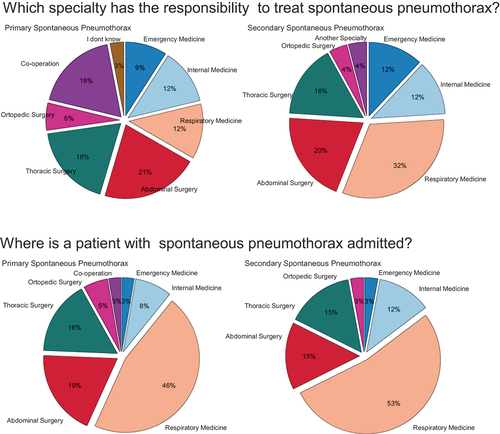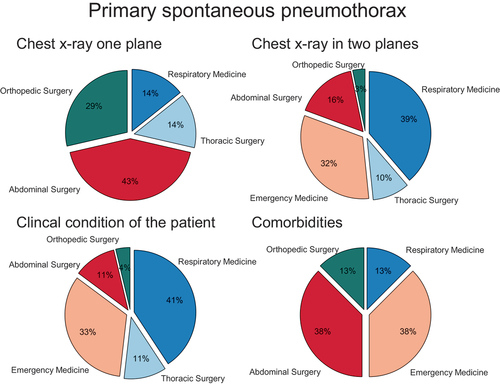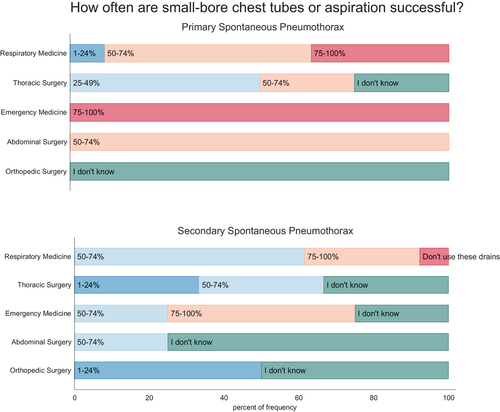Figures & data
Figure 2. Questionnaire results on how management of primary (PSP) and secondary spontaneous pneumothorax (SSP) is organized in Danish hospitals. Results show that there is a difference in which specialty has the responsibility to treat patients with SP and which department the patient is admitted to.

Figure 3. Use and perceived efficacy of small-bore chest tubes in primary (PSP) and secondary spontaneous pneumothorax (SSP) among specialties. Participants were asked how often they use small-bore chest tubes and how often they estimate these tubes are successful. Questionnaire results are shown in intervals ranging from never, red; 1–24% of the cases, blue; 25–49% of the cases, dark blue; 50–74% of the cases – light blue; 75–100% of the cases, yellow; or if not known; green.

Figure 4. Decision to treat primary (PSP) and secondary spontaneous pneumothorax (SSP) invasively. Participants were asked which of the variables they primarily based the decision to treat the patients with or without chest tube insertion on.

Table 1. Heatmap showing the distribution of which specialty should be responsible for the initial management of primary (PSP) and secondary spontaneous pneumothorax (SSP) and the distribution differences between responding specialties. Color coded based on percentage; green > 80%, light green 60–80%, dark blue 40–60%, light blue 20–40%, orange < 20%.



